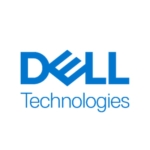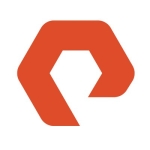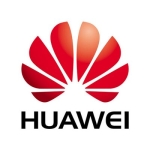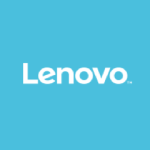What is our primary use case?
We use this solution for general, primary storage in an on-premises deployment.
How has it helped my organization?
This solution has improved our performance. We run a lot of security tools that scan for different things, and this would greatly impact our other storage arrays that were either spinning disks or hybrid storage. Even though we did see an impact on Pure, none of our applications that ran on Pure had experienced any problems.
Part of it was to simply go to an all-flash technology that shielded us from that, but it was also that the toolset was very valuable. We could quickly see how we were performing. With some of the other vendors' tools, it's really hard to know where the problem is or how it's performing. You just see the results. You see the symptoms of the problems, and it's hard to come to understand where they are coming from.
What is most valuable?
This solution is simple to install.
It comes with a large number of features out-of-the-box, which makes it easy for us to see problems and manage capacity.
We use the Evergreen Storage model so that we will get upgrades as they are needed, or as we expand. It has helped us meet some financial challenges we had internally. In the past, we had to buy whole trays of disks from another vendor. It's too much money because we typically bill people ahead of the project. This solution has helped us meet the spending needs of our customers, and allow us to be more flexible.
What needs improvement?
I would like to have an easy way to determine the cost per VM so that I can present a solution to our customers. We're going through a transformation where we are trying to run IT as a business. I need to know how much a VM costs, so I need to know how much the compute costs, how much the storage costs, and how much the backup costs. It's really difficult to go to every single product and try to decipher how much I've spent on each of the products. It's not always as easy as just dividing, saying well this must be the cost. I'd love to be able to get that data out of Pure and into vSphere so that I can just see, by VM, how much we should charge our customer.
What do I think about the stability of the solution?
The stability of this solution has been great. We did have a recent problem but it was probably poor capacity management on our part, where we allowed the system to become too full and it was unable to do its own correction. Besides that though, it runs great. It's very low-touch compared to some other vendors we have used in the past. In some cases, we used to really have to have an expert to run the storage network and now with Pure, that's not as important. Once it's installed and ready to go, it's very easy to maintain, very easy to provision new space, and very easy to expand the hardware. It's been transformational just in the way that you consume the product. It's a service now.
What do I think about the scalability of the solution?
We tend not to do too much expansion but we can easily scale with the way we have structured our purchasing model on Pure. We can add small chunks as we need capacity, and we can once or twice a year add, which is kind on our budgets. It's kind on the IT people, as we don't have to fight our way through approvals because we're buying very massive amounts of expansion. It just makes it a little easier for us to do our own jobs internally.
How are customer service and technical support?
I have never contacted technical support for this solution.
Which solution did I use previously and why did I switch?
We needed to do a lifecycle replacement, and we also knew that at the time that flash was just really starting to take hold. We had used a hybrid model before and we weren't necessarily satisfied with that product from another vendor.
We evaluated three products and Pure just really outshines them on the pre-sales. On the financing side of it they were more flexible. Today I would look at it and say that it's much more of an OPEX model, similar to Cloud, and as we try to promote our own on-premise cloud, that continues to be important to us. We want to be transparent about cost all the way back to our customer.
How was the initial setup?
My understanding is that the initial setup is generally easy compared to some other implementations we have done for storage in the past.
What about the implementation team?
Pure's consultants assisted us with the deployment, and we liked those guys. Our pre-sales team is really great to work with and I have never heard any complaints about the
support teams. That's typically an indicator that it was an acceptable service.
What was our ROI?
Well, as a personal perspective and from my team's perspective, we've seen a lot of return on investment. It is difficult to quantify monetarily. For example, we had one business unit that used Pure, they were the first, and it was supposed to be an evaluation at the time. We were going to come back later and do further evaluation of storage, but it performed so well that we didn't even think of evaluating again. When we needed to replace the other arrays, we went straight to Pure and life-cycled them into Pure in every segment we have. I think we only have one non-Pure storage array in the environment now, so that speaks volumes when it has worked that well.
In IT, we don't necessarily care about costs. We care about how much of a headache it is to make sure it keeps running and it was a win on both sides. It worked well in all areas for us. The other vendors weren't yet there, as Pure hit the market faster. Maybe the other vendors are catching up but it's going to be harder for us to walk away from Pure now that we have it working well.
What's my experience with pricing, setup cost, and licensing?
Pure has been flexible with us on the pricing models.
Which other solutions did I evaluate?
Prior to choosing this solution, we evaluated Dell EMC. We looked at Nimble but they weren't all-flash at the time so they didn't last very long. I am sure that we probably looked at an HP product but I don't think we ever really wanted to do business with them.
What other advice do I have?
After implementing this solution, we did see the performance impact. The performance had increased, although our customers did not see it. So as IT, on the backend, we could tell that something was happening but it didn't impact our customers. That is big for us because a lot of times, you have outages that IT recognizes that don't impact your customers. Those are the good outages. When you have an outage that impacts a customer then those are the bad days.
VMware greatly benefits our IT organization. We are about ninety-five percent virtualized, and it's made it tremendously easy to support the number of servers that we have with the number of staff that we have. It increases the ability to provision and de-provision. The whole server lifecycle is much simpler than when things used to be hardware only. It allows us to leverage our spending better because we can use the whole platform.
We have been running VMware for fifteen years, but the reason we have Pure there is so that we have a general workload platform there that can meet any and all needs for our customers. Only for very specific customers do we develop anything different. It gives us the power to run pretty much any workload besides maybe AMP-analytics or artificial intelligence, so it allows us to be very flexible. A lot of times, our customers don't know how to ask for the resources. They say "Just make it run". Our response is that we have a tool that is flexible and powerful enough to basically handle any request because our customers sometimes don't know how to size for their applications.
Running VMware on Pure helps because it makes it easy for IT. The virtualization makes it easy for IT to withstand outages, to do refreshes, and to make changes. With Pure, the all-flash gives you the speed to endure bumps in performance and it shields you against performance slips on your network. In the past, with spinning disk technology, you would feel the pain. You customers would experience the pain. We help the customers by not spending so much time dealing with the hardware. It's like "said it and forget it". We set it up, it's running and now we try to spend more time working with our customers to understand what they want to do and less time on the back end just trying to make sure that everything works.
I think we are using a plug-in with vCentre, which allows our system administrators to see into the storage. In the past, they would have to reach out to the storage team to try and understand if there are any performance problems. Now they can see that right away as they are troubleshooting, so instead of having to get two or three seniors together to troubleshoot, we can get one person in vCentre. They can do most of the high-level troubleshooting right away and only if it has developed into something they can't figure out, do they need to engage multiple people. This all allows us to respond quickly to the customer.
My advice to anybody who is researching this solution is to consider the impact on your employees. You want your employees to be successful so that your business can be successful. Don't look at just cost because any salesman can come in and make a proposal that looks appealing to you, whether it's over a one year period or three year period or otherwise. Especially when you deal with the very large vendors like Dell/EMC, who can bundle so many products together, it makes it easy for you. You have to also consider that this tool was so easy for us to implement that instead of spending three to six months fighting implementation, it was in so quickly that we were on to other efforts. There are a lot more soft costs that would have been there that we were able to avoid.
To summarize, I would suggest that you think more than just about the money and the investment, but the service level. For us, we needed support at international locations, and we took all of that into account.
I would rate this solution a ten out of ten.
Disclosure: My company does not have a business relationship with this vendor other than being a customer.











